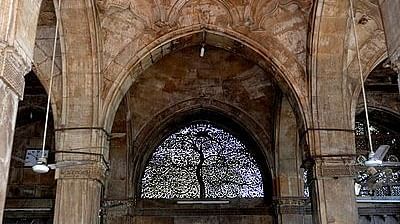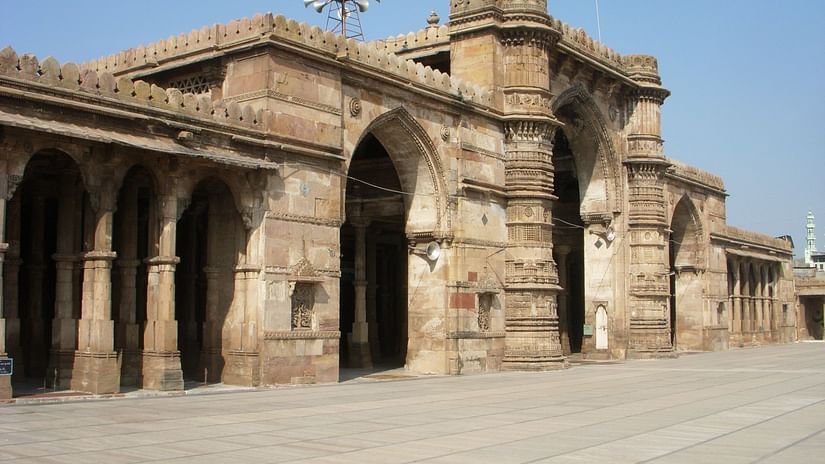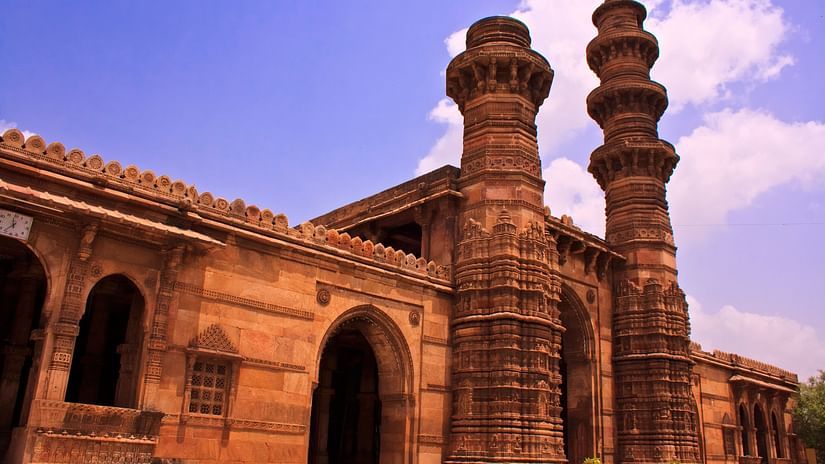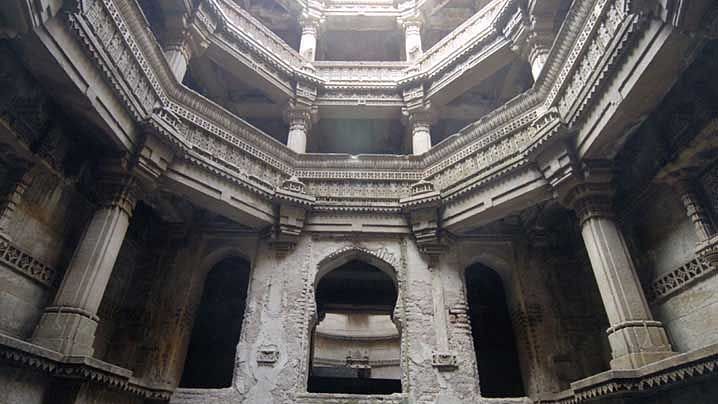Ahmedabad, in western India, is the largest city in Gujarat. The Sabarmati River runs through the centre of Ahmedabad. On the western bank of the river, is the Gandhi Ashram at Sabarmati, which houses Gandhi's living quarters and has on display artefacts, paintings, books and photographs related to the leader. Across the river is the Calico Museum of Textiles. The museum, which is home to a significant collection of antique and modern fabrics, was once a cloth merchant's mansion.

The Sidi Saiyyed Mosque
The Sidi Saiyyed Mosque, popularly known as Sidi Saiyyid ni Jali locally, built in 1572 AD, is one of the most famous mosques in Ahmedabad, Gujarat, India. As attested by the marble tablet fixed on the wall of the mosque, it was built by Sidi Saiyyid in the retinue of Bilal Jhajar Khan, general in the army of the last Sultan Shams-ud-Din Muzaffar Shah III of the Gujarat Sultanate.The mosque was built in the last year of the existence of Sultanate of Gujarat.The mosque is entirely arcuate and is famous for beautifully carved ten stone latticework windows (jalis) on the side and rear arches. The rear wall is filled with square stone pierced panels in geometrical designs.

Jama Masjid
Jama Masjid (literally Friday Mosque), also known as Jami or Jumma Mosque is the most splendid mosque of Ahmedabad, built in 1424 during the reign of Ahmed Shah I. Lying in the old walled city, the mosque is situated outside Bhadra Fort area, along the south side of the road extending from Teen Darwaza to Manek Chowk. The Jama Masjid of Ahmedabad was probably the largest mosque in the Indian subcontinent built in this period. Designed as part of a major plan desired by the Emperor Sultan Ahmed Shah, the mosque is located south of the processional axis that runs from the Maidan-i Shah at the door with three arches, Teen Darwaza.

Sidi Bashir Mosque
The mosque was completed in 1452. Only the minarets and arched central gateway remain, the body of the building was destroyed in 1753 during the war between the Marathas and Khan of Gujarat Sultanate. All traces of their mosque and the memory of its name and date are gone. The style and material of the minarets point to the close of Mahmud Begada's reign (1511) or perhaps rather later. Though much damaged, especially near the foot, the stairs inside the minarets may still be used. The mechanism that leads to vibration is still a mystery. An interesting thing about Jhulta Minar is that it can even withstand the pressure of fast-moving trains that pass from a distance not lying very far from the minaret.This minaret was built layer by layer that is why it can resist that much shaking without collapsing. It's around 600 years old.

Adalaj Stepwell
Adalaj Stepwell or Rudabai Stepwell is a stepwell located in the village of Adalaj, close to Ahmedabad city and in Gandhinagar district in the Indian state of Gujarat. It was built in 1498 by Rana Veer Singh of the Vaghela dynasty of Dandai Desh. The step well is intricately carved and is five stories deep. Such step wells were once integral to the semi-arid regions of Gujarat, as they provided water for drinking, washing and bathing. These wells were also venues for colourful festivals and sacred rituals. Stepwells built between the 5th and 19th centuries, are common in Western India; over 120 such wells are reported in the semi-arid region of Gujarat alone, of which the well at Adalaj is one of the most popular. While many such structures are utilitarian in construction, they sometimes include significant architectural embellishments, as in the Adalaj stepwell, which attracts a large number of tourists.